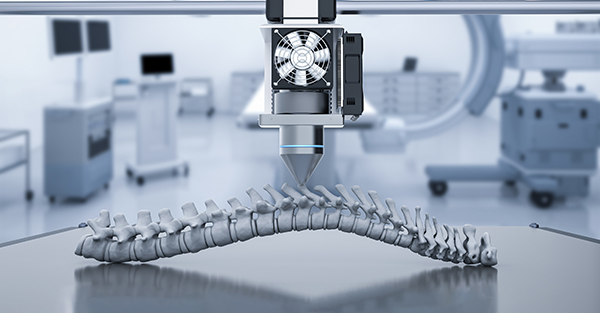
In early August, both Globus Medical (GMED) and K2M announced acquisitions that complement current products and position them as leaders in robotics and 3D printing, respectively.
Globus acquired KB Medical, a robotic developer based in Lausanne, Switzerland, for its strength in product development, personnel and intellectual property. The move was not in response to the launch delay for GMED’s ExcelsiusGPS™ robotic guidance and navigation system; rather, it was a strategic buy of a “very strong IP portfolio; they have a really strong group of individuals there…they see the clinical issues and technical issues in a very similar fashion to all our folks,” said David Demski, President of Globus’ Emerging Technologies.
KB’s AQrate™ Robotic Assistance system comprises hardware and software to support intra-op haptic steering; it received CE Mark Approval in 2Q16 and was indicated for use in general spinal surgery. Though clinical trials in spinal fusion have been performed in Europe, GMED doesn’t plan to commercialize the robot. Rather, the acquisition will shape future enhancements to ExcelsiusGPS.
KB Medical has also noted potential orthopaedic applications for AQrate throughout the body.
Meanwhile, K2M—on the heels of entering the expandable interbody space (with SAHARA® AL) and then opening the door on the 3D-printed expandable interbody space (MOJAVE™ PL)—announced its exclusive access to 17 issued and pending patents for expanding interbody fusion devices that it intends to develop with Lamellar 3D Titanium Technology™.
In the past two years, K2M has established its market leadership in 3D printing—being the first major spine company to market a 3D-printed spinal implant, and the one with the broadest portfolio of 3D-printed spinal devices today, addressing complex spine, MIS and degenerative procedures.
Of note, Globus Medical has the longest history in the market with expandable interbody devices, and is now on its third-generation iterations. And it is still building up its own IP in the space, as noted
by leadership in the 2Q17 earnings call. They’re keeping an eye on 3D printing—investigating and researching—but are not fully convinced of the clinical necessity for it in the vast majority of procedures, especially with the availability of surface coatings that support bony ongrowth. GMED leadership has opined that it may be best applied to custom implants for scoliosis or anatomic abnormalities.
In turn, K2M leadership’s stance on robotics in spine is: it’s still new, and K2M doesn’t need it for growth right now. As Eric Major, President & CEO, said, “We took the decision to move in the direction to get leadership in 3D printing…there are a number of other companies exploring navigation, imaging and robotics. We think that we’re still in the early innings of robotics. And while that technology is continuing to progress through entrepreneurs and innovators and startup and midsize companies, we’re taking advantage of 3D printing.”
M&A activity will continue in the spine market, which is saturated with players and technologies. DePuy Synthes, Choice Spine and Amendia have also made purchases this year to fill portfolio gaps. The GMED and K2M transactions are of interest because the two made acquisitions to further their strategies with emerging technologies that most competitors aren’t pursuing, therefore expanding their leads in the robotics (GMED) and 3D printing (K2M) arenas.
JAV
Julie A. Vetalice is ORTHOWORLD's Editorial Assistant. She has covered the orthopedic industry for over 20 years, having joined the company in 1999.




